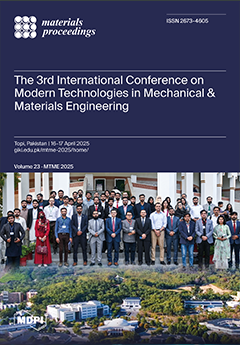Most people utilize their time indoors, either at home or in the workplace. However, certain human interventions badly affect the indoor atmosphere, causing potential health problems for occupants. This study aims to propose an air monitoring device integrated with an air purifier that
[...] Read more.
Most people utilize their time indoors, either at home or in the workplace. However, certain human interventions badly affect the indoor atmosphere, causing potential health problems for occupants. This study aims to propose an air monitoring device integrated with an air purifier that monitors the pollutants affecting the indoor environment and automatically turns on/off the air purifier based on the pollution level. In the system, MQ7, MQ2, DHT11, and GP2Y1010AU0F sensors are integrated with ESP32 to detect indoor air pollutants, e.g., carbon monoxide (CO), methane (CH
4), temperature, humidity, and PM2.5. Data were collected for 30 days by mounting a proposed device in different indoor locations, including a poorly ventilated average living room, an indoor kitchen, and a crowded office space. The emission of carbon monoxide (CO) and methane (CH
4) was at 29.4 ppm and 10.9 ppm, PM2.5 was detected as 3 µg/m
3, and the temperature and humidity were at 23 °C and 28%, respectively. Utilizing the Wi-Fi ability of ESP32, the data were transferred to the ThingSpeak IoT platform for the live tracking and analysis of the indoor atmosphere. Observing the measured data, the proposed system’s accuracy was calculated by comparing the results against a known standard device, which was estimated to be 95%. To protect the designed system, a protective case was also designed.
Full article



